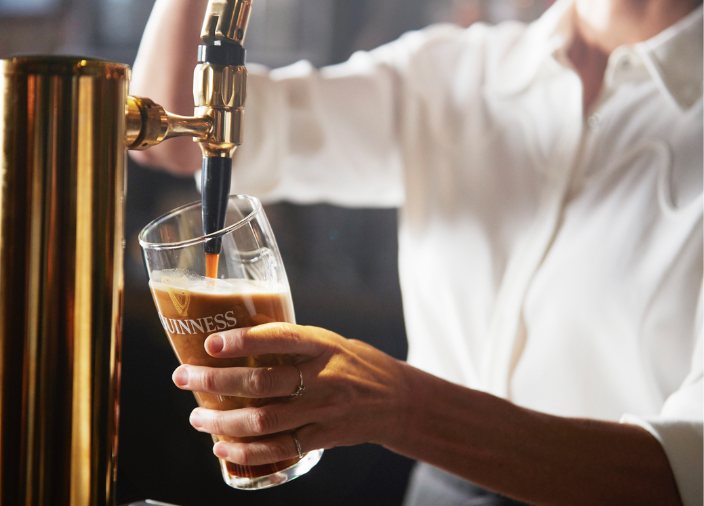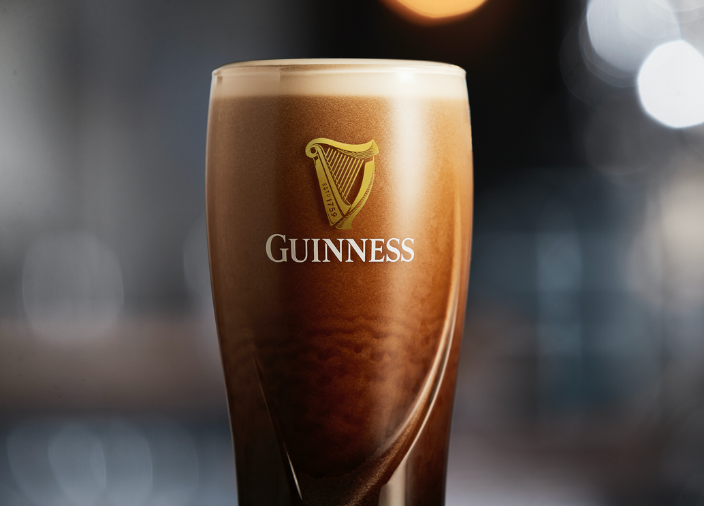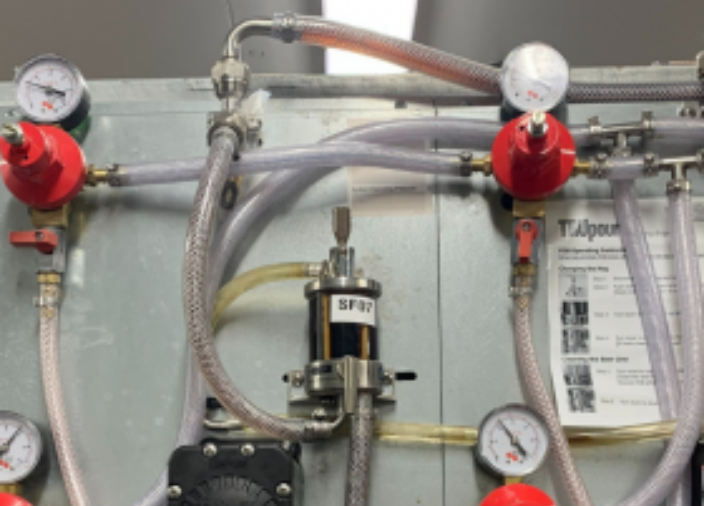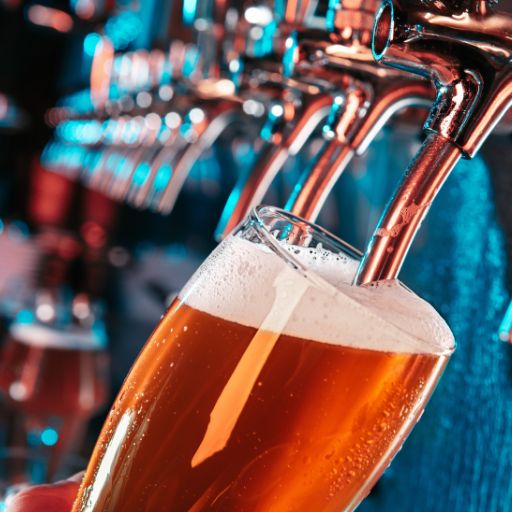
An Expert Guide to Pouring the Perfect Guinness
Learn to pour the iconic, beautiful Guinness pint flawlessly.
Author: Ryan Wagner, Guinness Brand Ambassador
Estimated reading time: 4 minutes
Ultimate Drink Experience

Ultimate Drink Experience
Guinness may sometimes travel thousands of miles to reach its destination, but the most critical part of the journey may be in the last few feet from the keg to the glass – the final link in the quality chain. Nothing reassures a guest more about the quality of your venue than a properly poured pint of Guinness
National Ambassador for the Guinness Open Gate Brewery, Ryan Wagner, shares his expertise on how Guinness is best stored, poured and served.
HOW TO POUR A PINT OF GUINNESS FROM TAP

HOW TO POUR A PINT OF GUINNESS FROM TAP
Learning how to pour a pint of Guinness is an essential skill for bartenders to achieve perfect head size, visual presentation, and taste. Follow these six steps for the perfect pint of Guinness:
Select a cool, beer-clean, branded Gravity Glass.
Holding the glass at a 45-degree angle to the tap, open the tap fully by bringing the handle all the way down toward you.
As the beer fills, adjust the glass to an upright position, closing the tap when the beer reaches the top of the gold harp on the front of the glass.
Allow the beer to settle fully until the entire pint is a consistent color throughout (it takes about 90 seconds).
Top up the beer by pushing the tap handle away from you until the beer is just proud of the rim of the glass. The total head height should be between one-half to three-quarters of an inch, or 12-18 mm.
Serve the glass with the Guinness logo facing toward the guest.
HOW TO POUR A PINT OF GUINNESS FROM A BOTTLE

HOW TO POUR A PINT OF GUINNESS FROM A BOTTLE
Make sure the bottle has been stored for at least 24 hours in a fridge. This will ensure it’s at the optimum temperature of 6 degrees.
Crack the cap of the bottle in front of the customer for maximum sensory impact.
Hold a chilled glass at a 45° angle and start pouting the bottle very slowly (don’t rush this part as you don’t want too much gas escaping).
Just as the beer is approaching the top, straighten the glass and pour until it’s just over the rim to create a beautiful tan head.
1. Temperature - Best served cold.

1. Temperature - Best served cold.
Guinness beer should always be served cold. Beer is a food product and needs to be treated as one.
The longer and more consistently you keep your beer at the correct temperature, the slower the ageing process of that beer will be.
The correct temperature keeps the gas inside of the beer at its proper balance. This is important in maintaining the perfect Guinness taste experience.
Beer that is too warm will foam due to overexcited CO2. Beer that is too cold won't allow ideal head formation and retention.
The perfect temperature to keep beer is 38 degrees Fahrenheit in the USA or between 3-8 degrees Celsius in other countries.
Remember: Kegs take 24 hours to acclimate to a cold room's temperature. If your kegs arrive at room temperature, they must be in the cold room for a whole day to get to the proper temperature.
2. Pressure - A draught system is only effective if it's in balance.
Regulators controlling gas pressure and maintaining the keg's balance must be set to specific settings to pour the perfect beer.
In the case of Guinness Draught Stout, that setting is between 30 – 38 PSI. Other beers require their own unique settings.
Too low or too high, and the pour will be impacted, causing issues with taste and carbonation.
Your distributor or local quality team will be able to adjust this for you if required.
Watch Now: See inside a Guinness Cold Box
3. Cleanliness – Any one unclean draught system component (couplers, beer pumps, lines, taps) can disrupt the pour.
The frequency and methods for cleaning the system are precise (e.g. in the US, we recommend lines are cleaned every two weeks).
In most cases, trained professionals carry out this process, but understanding those processes can help you guarantee the work is done as often and as well as it should be.
Remember: Treat your cold room and draught system components as part of your food program – in many ways, they are.
4. Glassware - Clean glassware is essential to a beer's appearance, aroma, and flavour.
Keep your dishware separate - Wash coffee cups, milk jugs, etc. and beer glasses in different washers to prevent food waste or dairy residue from getting inside the glasses.
Allow the glassware to air-dry - Place it on racks that allow air to circulate inside.
If using a sanitiser - allow the sanitiser to dry completely before pouring.
Never chill or freeze your glassware – Ice crystals forming inside the glass create nucleation points, which cause the beer to foam. Frozen glassware almost always leads to wasted beer.
Serve with Passion
Remember beer quality is critically important, but equally important is the bartender bringing their passion, stories and authentic self to the process. When those two elements are in balance, the pints will be perfect.
Key Takeaways
Temperature is critical - It's vital to both the quality of the pour and the beer itself. Guinness beer should never be served at room temperature.
Small errors can cause significant problems - Having a balanced draught system with correct pressures throughout is an often overlooked but critical part of the quality chain.
Cleaning and maintenance are critical- Learn the basics and understand the importance of regular and proper draught system care so you can control that process.
Clean glassware makes a world of difference - Simple pouring techniques and clean glassware are quick, easy adjustments that will save you a lot of beer over time.
Remember the part you play in this process - The best beer in the world poured through the best draught system will still miss the mark if the experiential elements created by the bar staff are in place.
By following these meticulously crafted steps for the perfect Guinness, you'll not only delight your customers and enhance your bar's reputation but also uphold the heritage and tradition that makes perfect pint of Guinness an iconic experience enjoyed around the globe.
Learn from the experts, improve your skills and find inspiration for your career when you sign up to the Diageo Bar Academy.
Related content

Beer Essentials
This module will teach you what you need to know about beer, from the basics of brewing, through to styles and flavours.
An Expert Guide To Beer Flavours & Styles
Learn about the different types of beer and the flavours they best pair best with in this webinar, presented by expert sommeliers Padraig Fox and Ian Colgan.
Guinness
Arguably the most famous beer in the world, dive into the story behind the brand and find out what makes Guinness so special.
